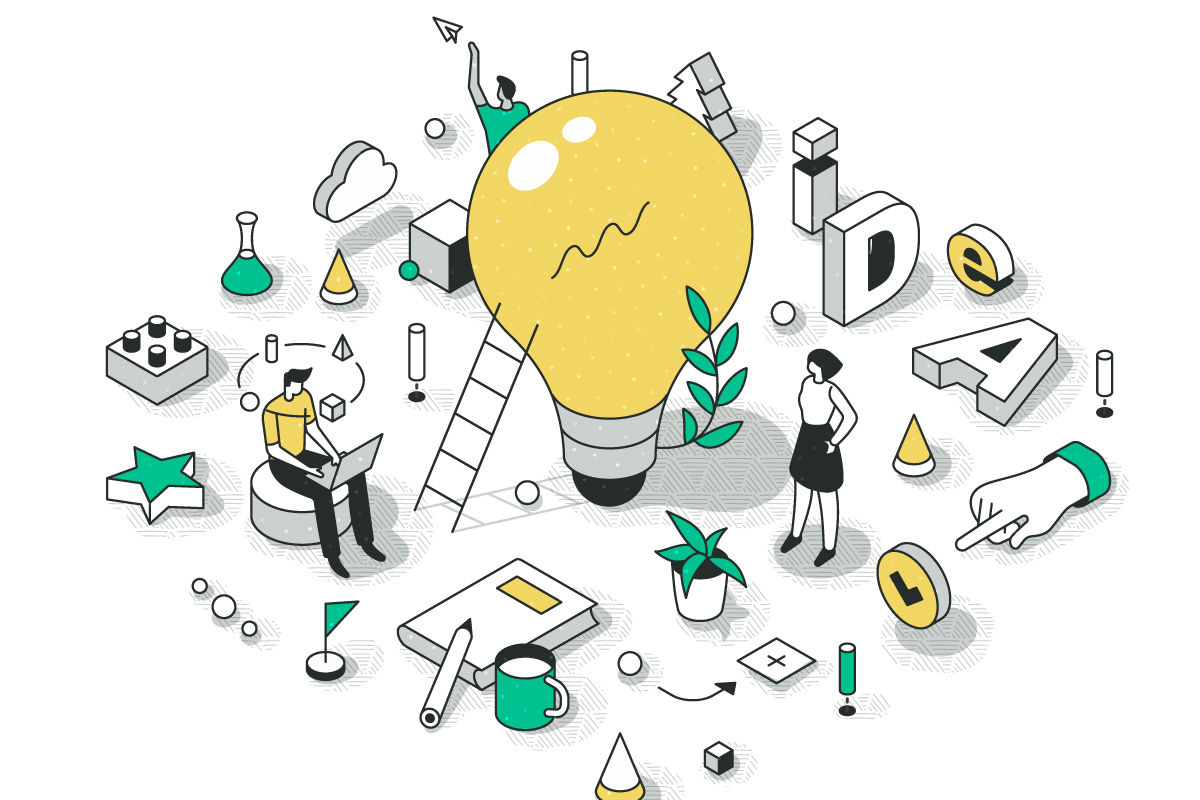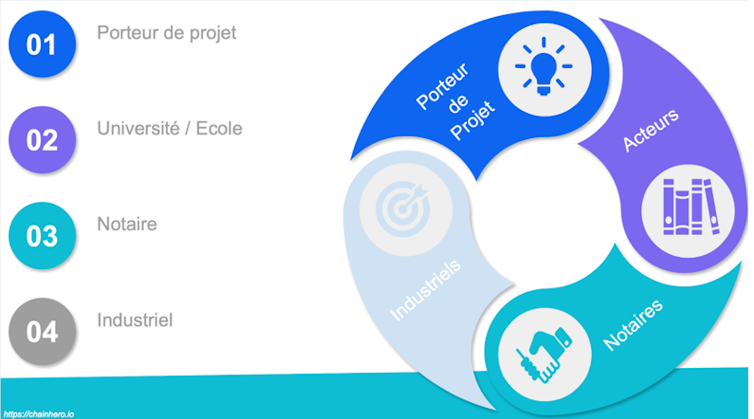The challenges of authentication to protect creativity at its source
Innovation, creativity, and its expression are the fundamental drivers of a country's scientific, industrial, cultural, and economic success. It is becoming essential to give confidence to inventors by giving ourselves the ability to protect creativity at its source. Certifying the authenticity of a new idea, or of the person who had the new idea, is essential to making our vibrant age of inventors fairer.
Michel Robert, University of Montpellier and Jean Sallantin, University of Montpellier

The technical challenge is to offer a simplified solution for filing ideas that has the legal capacity to protect budding or established innovators and can be quickly deployed on a national scale while respecting the requirements of confidentiality (only the filer can see it) and transparency (it is partially disclosed so that good ideas can be revealed when confronted with other ideas). An economic and societal challenge would be for the management of the proliferation of individual acts of creativity to be the source of the emergence of ideas at the local level that are equal to the challenges posed in particular by climate change and the loss of biodiversity.
Creativity is poorly protected
In academia, recognizing risk-taking and creativity in researcher evaluations should be based on practical, recognized recording formats that go beyond the current overly limited and sometimes unsuitable framework—such as patent filing—for measuring the impact of research work.
The protection of research work carried out by students and doctoral candidates in laboratories is also regularly raised, with unfortunate cases of abuse in the exploitation of their work, for example by excluding them from the authorship of scientific publications. However, there are protection mechanisms in place in doctoral schools and laboratories, such as the "laboratory notebook" which chronologically records the work carried out, but this type of mechanism is not easily adaptable to all scientific disciplines.
In today's digital society, with its interconnected objects and new uses (video games, etc.), talented students—and even high school students—are increasingly being discovered outside the usual research laboratory circuits. Universities and schools play a role in supporting them in various technical, scientific, and educational aspects (e.g., innovation competitions), but could also play a role in protecting the concepts they develop.
The issue of maintaining creative wealth also arises for start-ups, which by their very nature embody the values of innovation and creativity, but have low survival rates. This raises the question of personal protection of inventors' intellectual property, and the question of how to monetize what is unfortunately left in boxes after one or two years of work on a project!
So how, in such a strategic context, can we support, promote, and guarantee the authentication of creativity? How can we develop an ecosystem that protects all those who contribute new ideas?
How can we democratize the protection of creativity?
There are, of course, mechanisms for keeping track of innovation, such as patent filing and the Soleau envelope, but they are too expensive, too complex, little known, and, above all, they come into play too late and in a non-systematic way in the value chain. The aim is therefore to create an entire ecosystem dedicated to defending creativity, but above all to collecting, cataloging, and promoting it.
To meet these challenges, we propose the establishment of a platform that is easy to use, accessible to all, visible, recognized, responsible for defending registered ideas, but also responsible for promoting them.
- The societal challenge is to create an ecosystem that protects and promotes innovation throughout France.
- The economic challenge is to build trust between the project leaders and the various stakeholders.
- The technical challenge is to create an efficient, secure computer system that is physically distributed across the territory.
The simple idea here is to disseminate protected ideas on the Internet, as they are authenticated by notaries, who are specialists in authenticating all kinds of documents. This public service would ideally be free of charge in order to encourage the dissemination of ideas that the owners wish to make public and to ensure the filing of ideas that the owners wish to keep secret for the time being so that they can choose when to disclose them. It would also enable editorialists to bring the platform's content to life by organizing dynamic indexing of ideas arising from the debates they generate.
Debates are the established means of advancing everyone's knowledge and developing ideas themselves. That is why creators must be given the ability to protect their ideas when they are debated, i.e., even before copyright management or the filing of patents for an invention in which they are involved. Protection must therefore be provided "at source"; it must be immediate and easily accessible.
To achieve this, it is necessary to be able to provide the most appropriate technological guarantee to secure end users, so that every piece of their innovation deposited on the platform is inalienably linked to their identity, while allowing their advances to be showcased. This is now possible with a blockchain approach. The idea is to assign notaries the task of authenticating and protecting the ideas of their clients and securing their relationships, while promoting the development of these ideas. Their role as authenticators will stimulate the process and guarantee the certification of transactions. Notaries already have a shared and secure distributed IT infrastructure for drafting and archiving deeds. Notaries receive deeds, some of which are unilateral (authentic wills). By receiving the deposit, the notary helps to combat fraud or identity theft and gives the depositor and third parties assurance of the deposit and its date; the blockchain secures the file, its durability, and its consultation.
Towards a creativity authentication loop
It is in this context that a prototype creativity authentication loop was developed for the Lyon Regional Council of Notaries, based on the Hyperledger tool.

Provided by the author
The idea authentication process involves several parties:
- Project leaders who will benefit from the idea protection filing service in order to promote their work;
- Contributors are individuals and institutions in contact with project leaders (such as universities, engineering schools, incubators, etc.) who will encourage project leaders to submit their ideas and work.
- Validators, who are notaries that will use their legitimacy to record project leaders' ideas in the blockchain;
- Editorialists whose mission is to spread ideas through a communication strategy. These publishers could be private or public agencies seeking to generate new projects, or third places promoting creativity in their region.
- Manufacturers who will have premium access to the catalog of ideas in order to request direct contact with project leaders.
A new virtuous and pragmatic ecosystem
Essentially, blockchain technology, with its cryptographic principles and data and transaction distribution, is ideally suited to the issues of time stamping, traceability, and immutability. On a subject as critical as the protection of innovation, it provides a major technological guarantee to protect the interests of project leaders and avoid any conflicts of interest. Nevertheless, it remains only a facilitator, and for adoption to take place, it is essential that this mission be carried out by actors who see both societal and economic benefits in it. The founding idea is therefore to offer a blockchain platform that simply meets the immediate needs of the various actors involved in innovation.
1) For project leaders who are technically unable to protect an innovation, the platform provides a simple and easily accessible digital procedure for protecting innovation.
2) For those who are unaware of the means of protection available to them or who lack interest in protecting their ideas, they will meet with an editorial team which, together with the notarial network, is responsible for producing a simplified catalog of innovations that will serve to establish a relationship between project leaders and potential industrial partners.
3) With a survival rate of less than 20%, all the innovation of a young structure, lost when it disappears, would be highlighted as protected innovations in a simplified catalog available to industrial partners.
4) Faced with the difficulty of a structure to innovate and its constant need to acquire talent or new ideas, there would be direct access to a simplified and anonymous catalog of innovation with the possibility of being put in direct contact with project leaders.
5) Notaries face a general lack of awareness of the societal importance of their profession. As they will serve as the moral and legal guarantors of a system aimed at a large, younger audience, notaries could promote their role in protecting innovation and creativity, simply and to as many people as possible.
Based on these concepts and the creation of a prototype that can easily be produced today using blockchain technology, we can imagine a simplified, paperless filing system that encourages creativity at the source of innovation. Deployment in a public setting with the notarial profession would thus enable the rapid implementation of new responsible practices that promote creativity on a national scale.
This article was co-written with Denis Pierre Simon, notary (honorary president of the Lyon Regional Council of Notaries) and Nicolas Herzog (blockchain development expert).![]()
Michel Robert, Professor of Microelectronics, University of Montpellier and Jean Sallantin, Emeritus Research Director at the CNRS, University of Montpellier
This article is republished from The Conversation under a Creative Commons license. Readthe original article.